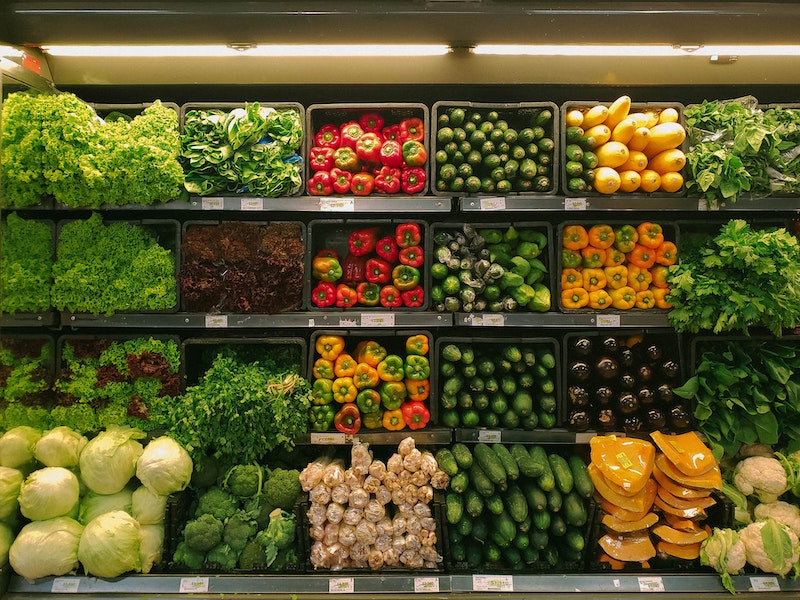Looking to cut down on waste and shop mindfully? You’re in luck! In this blog post, we will discuss some easy tips that will help you reduce your environmental impact and make more sustainable choices when shopping. We’ll cover everything from reducing packaging waste to choosing eco-friendly products. So whether you’re just getting started or looking for ways to take your ethical and sustainable shopping habits to the next level, read on for some helpful tips!
13 Sustainable Shopping Tips: How To Shop More Sustainably, Cut Down on Waste, and Shop Mindfully
1. What is sustainable shopping
There are many ways to reduce your impact on the environment, and one of them is through sustainable shopping. Sustainable shopping

2. Benefits of sustainable shopping
One way to help reduce your impact on the planet is to practice sustainable shopping. This means choosing socially and environmentally friendly products that have less of an impact on the planet. For example, you can buy sustainable products made from recycled materials, or choose items that can be reused or recycled. Sustainable materials are those that can be replenished or recycled easily, such as bamboo, organic cotton, or recycled plastic. You can also look for products that have been certified as environmentally friendly. When you shop sustainably, you can help reduce your carbon footprint and save money. Sustainable shopping is a great way to protect the environment and save money at the same time.
Another way to shop sustainably is to choose products that have a positive impact on the environment. For example, you might look for fair trade coffee or a reusable water bottle. Finally, sustainable shopping can also help you save money in the long run. Energy-efficient light bulbs, for example, may cost more upfront but will save you money on your energy bill over time.
3. Reducing plastic waste when shopping
Whenever you go food shopping, be sure to bring along some reusable bags with you! This way, you won’t have to rely on those plastic bags that the store gives you, which damage the environment. Not only is this more eco-friendly, but it can also help you save money in the long run because you won’t have to keep buying new plastic bags. Additionally, try to avoid purchasing items that come wrapped in a lot of plastic packaging. If possible, opt for items that are sold without any packaging, or with minimal packaging. This small change can make a big difference in reducing your overall plastic waste.
4. Advice for choosing eco-friendly products
When buying products, it is important to consider the impact that they will have on the environment. Sustainable brands typically use less

5. Buying local and Buying seasonal produce
When it comes to tip #5 on how to protect the environment, it is recommended that you buy local and seasonal produce. This is because the food has not had to travel as far so there are fewer emissions from transport, and it is also usually cheaper. In addition, seasonal produce is often a higher quality as it has been allowed to ripe fully before being picked. To find out what produce is in season, you can either ask at your local grocery store or do a quick search online. Furthermore, buying local produce helps to support farmers in your area and can even be more nutritious. So, next time you are doing your grocery shopping, make an effort to buy some local and seasonal produce. Your wallet and the planet will thank you!
6. Buying recycled and second-hand items
One way to reduce your environmental impact is to thrift store shop or buy recycled. You can often find items like clothes, furniture, and

When you buy products made from recycled materials, you’re helping to close the loop by decreasing the demand for virgin materials and reducing waste. Plus, recycled products often cost less than their virgin counterparts because they require less energy and natural resources to produce. So, next time you need something new, consider thrift store shopping or buying recycled instead of opting for something brand-new. Your wallet (and the planet) will thank you.
7. Reusing containers
One way to reduce your plastic use is to reuse plastic containers. That plastic take-out container can become your new lunch box, or those plastic freezer bags can be used to store snacks for the kids. You can even reuse plastic wrap! If you have a piece of plastic wrap that is no longer sticky, you can use it as a dishcloth or dust cloth. This tip is not only good for the environment, but it can also help you save money.
By reusing plastic containers, you will reduce the amount of plastic wrapping needed, and you won’t have to buy as many new containers. So next time you are about to throw away a plastic container, think about how you could reuse it instead. And if you’re ever in the market for a new container, be sure to choose one that is high quality and will stand the test of time.
8. Switching to sustainable brands
One small way to make a big impact on the environment is to switch to sustainable cleaning products. This can be anything from using

Sustainable Food Brands
Here are just a few of the most sustainable food brands in the game.
- Grove Collaborative
- Lundberg Family Farms
- Brewer’s Crackers
- Nature’s Path
- Thrive Market
- One Degree Foods
- Patagonia Provisions
- Organic Valley
- Seventh Generation
9. Buying in bulk
Buying in bulk is a great way to save money, reduce waste, and stock up for a long time. When you buy in bulk, you only have to buy what you need, which means that there is less packaging material and fewer trips to the store. This can save you money on gas and packaging materials. In addition, buying in bulk can help to reduce food waste. When you buy large quantities of food, you are more likely to use it all before it goes bad. This can help to reduce your carbon footprint and save you money on your grocery bill. Buying in bulk is a great way to save money and protect the environment.
10. Opting for biodegradable products
You can help reduce your environmental footprint and save money by choosing biodegradable products. When disposed of properly, biodegradable products will decompose quickly and release valuable nutrients back into the soil. This helps to reduce landfill waste and the need for chemical fertilizers. Additionally, biodegradable products are often made from renewable materials such as bamboo or hemp, which have a lower impact on the environment than traditional materials such as plastic or metal. When shopping for household items, look for products that are labeled as biodegradable or compostable. With a little effort, you can help to make a difference in the environment.
11. Considering energy-efficient goods
Many consumers are unaware of the environmental impact of the products they purchase. Tip #11 on sustainable shopping is to buy energy-efficient goods. This can be accomplished by reading product labels and doing research on a company’s website before making a purchase. items with the ENERGY STAR label are certified to be more energy-efficient than standard models. Buying energy-efficient products are not only good for the environment, but it can also save money on utility bills. When shopping for appliances, look for models that have earned the ENERGY STAR label. ENERGY STAR certified products use less water and electricity, which can lead to lower utility bills and lessen environmental impact. Buying energy-efficient products is a simple way to save money and protect the environment.
12. Avoiding impulse items
According to a study conducted by the National Retail Federation, the average American spends about $1,200 on impulse purchases per

One way to do this is to make a shopping list of what you need before you head to the store. This will help you to stay focused on your goal and prevent you from adding unnecessary items to your cart. Additionally, try to only shop when you have the time to browse carefully. This will help you to avoid buying items that you don’t need or want. Remember – before you hit that buy button, make sure you really need it.
13. Shopping less
One way to reduce your impact on the environment is to shop less. This may seem like an obvious solution, but it can be difficult to put into practice. For many of us, shopping is a form of entertainment or a way to relieve stress. However, the more we consume, the more strain we put on the planet. The manufacturing and transportation of goods require a lot of energy and resources, and the packaging materials end up in landfills where they take centuries to decompose. In addition, excessive consumption can lead to financial strain. If you’re trying to reduce your shopping habits, here are a few tips that may help:
-Unsubscribe from promotional emails:
This will help to reduce the temptation to buy things you don’t need and reduce shopping online.
-Create a budget:
Decide how much money you’re willing to spend each month on discretionary items and stick to it.
-Skip the mall:
Instead of window shopping or aimlessly wandering around, find other ways to entertain yourself. Take a walk in nature, visit a museum, or read a book. Its much harder to impulse buy in the mall when you’re not in the physical store.
-Borrow instead of buy:
If you only need an item for a short period, see if you can borrow it from a friend or family member. This will save you money and help to reduce consumption.
Sustainable shopping may seem like a daunting task, but by following these simple tips, you can make a difference in the environment and your wallet. By buying energy-efficient products, avoiding impulse purchases, and shopping less, you can help to reduce the strain on the planet. You’ll also help to create a more sustainable future. These are just a few of the many ways that you can make sustainable choices when shopping. What other sustainable shopping tips do you have? Share your thoughts in the comments below!


Recent Comments